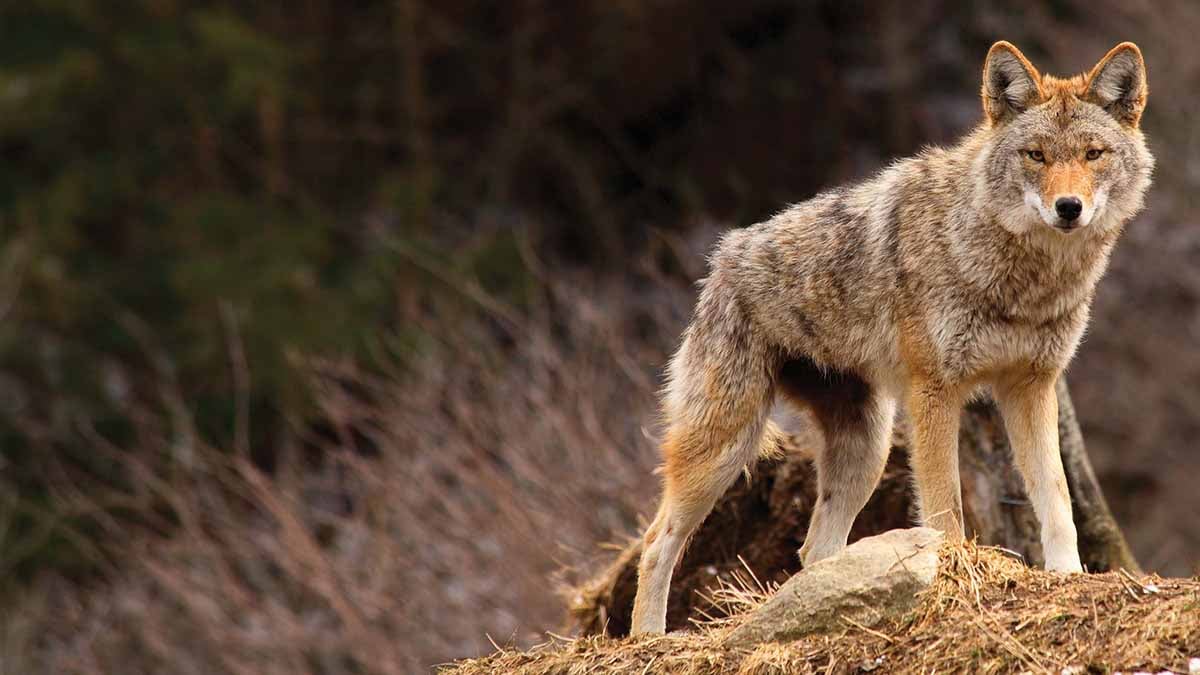What’s that running across Route 2? In the Friendship area of Anne Arundel County, a coyote trots across the road. Coyotes ventured east from the Great Plains of the Midwestern states. In 1972, the first coyotes in Maryland were spotted in Cecil, Frederick and Washington counties. Since that time, they have taken up residence in every county of the Free State as well as every state sans Hawaii. Let’s examine the characteristics and a bit of history of this elusive animal.
“Coyote” is an ancient Aztec name from 1,000 years ago. The coyote was well known by many before the westward expansion of the United States. However, this canid was first spotted and noted in 1804 in what is now South Dakota during the westward travels of Lewis and Clark. William Clark named this curious creature a prairie wolf. He was baffled by this animal that resembled both a fox and a wolf but did not quite fit all the characteristics of either.
Despite the sighting by the Lewis and Clark expedition, no official name was given to the “new to them” animal. It would be Thomas Say who in 1823 donned the prairie wolf with the Latin name Canis latrans or barking dog; Say would be credited with its discovery.
The coyote strayed from the Midwest in the early 1900s and traveled to the north, south and east. This was mostly due to the change in habitat of those areas. The clearing of forests resulted in more open farmland and hedge areas; this was desirable to the coyote. Also, wolves and mountain lions were hunted to extinction in the east providing the coyote with peace of mind.
Do you recall “Wile E. Coyote” and “Road Runner” cartoon characters of your youth? The coyote has been called “wily” for many moons. Webster’s defines “wily” as: crafty; cunning. These smart, adaptable and wily animals have succeeded in thriving across the continental United States. Whether in proximity to humans or not, the coyote adapts to its surroundings.
The coyote is about the size of a medium dog. According to National Geographic, the coyote is about 32 — 37 inches long from stem to stern with another 16 inches added for their tail. They are 18 — 24 inches tall at the shoulder. They weigh between 20 and 50 pounds and some may attain a heft of 60 pounds; males are heavier than females. Depending on their habitat, the coyote may sport white to gray to tan and brown coat coloration. Their omnivorous diet consists of birds, mice, squirrels, rabbits, snakes, frogs and others to include carrion, as well as insects, fruit and vegetable matter. They are not fussy about their meals. In urban areas they are drawn to trash and food stuff left unattended by humans. Take care with your small dog or cat; the coyote is not averse to having them for a snack. The coyote will usually avoid humans unless they are rabid. The coyote does have foes. In Maryland the black bear and humans may help a coyote meet their demise.
The breeding season for the coyote is January to March with February being the peak month. The expectant mother prepares a den for her pups and the gestation period is 60 — 63 days. The litter is usually 4 — 7 in number and the coyote seems to have an uncanny way of knowing if it’s best to have a small or large number of pups according to how well stocked the larder around her. The monogamous couple helps care for the pups that open their eyes after birth around day 10. The coyote lives for about five to six years but may attain 12 years in the wild. Records indicate the longest-lived coyote was about 19 years of age.
These canids may live a solitary life or in social groups. Sometimes they switch from one to the other. Their territory can cover several square miles which they will strongly defend. Their home may be forests, open fields or marshland. The coyote has invaded much of the territory of the red fox. Today you may be seeing more of the red fox than before as they are locating in closer proximity to developed areas as the coyote moves in to their neck of the woods. The coyote is rarely seen as it is usually nocturnal though may be out and about very early in the day or at sundown.
The coyote usually does not pose a threat to humans and their pursuits. Occasionally livestock is attacked, a pet goes missing or rabies may cause a human interaction. A coyote may attack or kill a lamb, calf, pig or chicken. In Maryland such attacks are uncommon and not the cause of major loss of livestock. To prevent your domestic pet’s untimely end, it is best not to feed them out of doors which may attract a hungry coyote. Keep your garbage well contained and in general don’t leave food outside where it can tempt a coyote or other wild animal. Bird feeders may also attract the coyote that will go after the birds not the seed. Keep pets fenced in and especially watch smaller pets when they are outside. Of course, should a coyote approach you, you may assume it to be rabid and keep your distance. Report any incidence of a suspected ill or rabid animal to your local animal control, or police.
Thus far, the coyote has lived relatively quietly in Maryland. Don’t fear the wily coyote, but be aware of their presence and take precautions to keep them at bay.
Barbara loves nature and the history of Maryland. While driving in late August, a coyote crossed Route 2 at about 3:30 pm in the Friendship area of Anne Arundel County. It is rare to spot a coyote at this time of day. Barbara may be reached at [email protected].

Let's keep in touch!
Keep up with the latest OutLook by the Bay information by signing up here. We promise not to waste your time.


